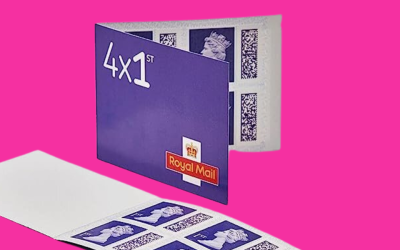Segmentation is dividing a mailing list into smaller groups by certain data such as location, demographic, interest, or buying patterns. It involves dividing a large group of people into smaller, more specific groups for more defined and specific targeting so that you can tailor the messaging, content, imaging, and offer of your mail to match their exact needs.
Segmentation is about understanding your different types of customer and that different audiences have different behaviours, attitudes, expectations, needs, and requirements. When you segment your audience, you can craft mail that resonates more deeply with your audience to increase engagement, inspire action, increase conversions, and maximise ROI.
This article looks at the different ways in which you can segment your direct mail list for a more successful direct marketing campaign.
-
Geographic Segmentation
Geographic segmentation involves segmenting your audience based on the location of prospects. You could target a customer based on a specific country, region, postcode, street, neighbourhood, village, town, or city.
For example, segmenting your list by geographic location would work well if you were a local business such as a takeaway or hairdressers that want to target customers in the local community.
-
Demographic Segmentation
Demographic segmentation groups people using specific demographic data and characteristics such as age, gender, income, marital status, occupation, or life stage (marriage, parenthood, home ownership).
Segmenting your list in this way will help you to connect on a more personal level with customers through more relevant content and offers. This could be as simple as promoting different clothing collections to men and women, sending a special birthday offer, or customising messaging to resonate with different age groups.
You can now also send your mail targeting to a certain demographic using postcodes, where data is used to target an audience based on known customers in the area. This mailing technique is called Partially Addressed Mail and addresses a household rather than an individual. You can also cut costs and maximise your budget on data and postage, find out more here: https://www.bakergoodchild.co.uk/partially-addressed-mail/
-
Psychographic Segmentation
Psychographic segmentation combines psychology and demographics to target an audience. You can segment your list based on a prospect’s unique attitudes, values, interests, personality, hobbies, or personality traits.
This type of segmentation could work well for companies with a very specific target audience who offer very specialised products that don’t appeal to mass numbers of people. Connect with this audience using ultra-specific, custom-made messaging, and they will be much more likely to convert.
Firmographic segmentation is most often used in B2B mailings to market to different businesses. Your audience could be segmented by business type such as corporations, non-profits, small businesses, or business industry, revenue, or number of employees.
Firmographic segmentation involves understanding the needs of different businesses and altering your messaging to achieve a greater response rate. Think about the different types of businesses you want to reach and their unique pain points, and then target each business by addressing how you can solve their individual problems.
-
Sales Stage Segmentation
Sales stage segmentation is based on where prospects are in the buyer journey. Tailor your direct mail content to their position in the journey and you could help push them into the next stage of the funnel. This journey consists of 3 stages:
- Awareness – the buyer realises they have a problem
- Consideration – the buyer researches how to solve the problem
- Evaluation – the buyer chooses a solution
You could segment your list into active customers, inactive customers, prospects, one-time buyers, frequent buyers, loyal customers, past customers, or purchase history. Understand the types of content the buyer wants at each stage of the journey and tailor your content to their needs.
This could involve sending brand awareness pieces to those in the awareness stage, targeting repeat customers with new products, sending an exclusive offer to loyal customers, or using purchase history to send products similar to frequent buyers’ last purchase. This is a great way to nurture leads and turn inactive into active customers, and one-time buyers into frequent buyers and loyal customers.
Try segmenting your mail lists by demographic, geography, psychographic, firmographic, and sales stage. You can also combine multiple segmentation methods, for example, geographic and demographic, for ultra-specific targeting. Segmenting your mailing lists will ensure more specific targeting for tailored messaging which will increase engagement, maximise conversions, and increase ROI for greater campaign success.
For more helpful tips and advice on segmenting your mailing lists or any aspect of direct mail, get in touch with our experts today and we will be more than happy to help.







